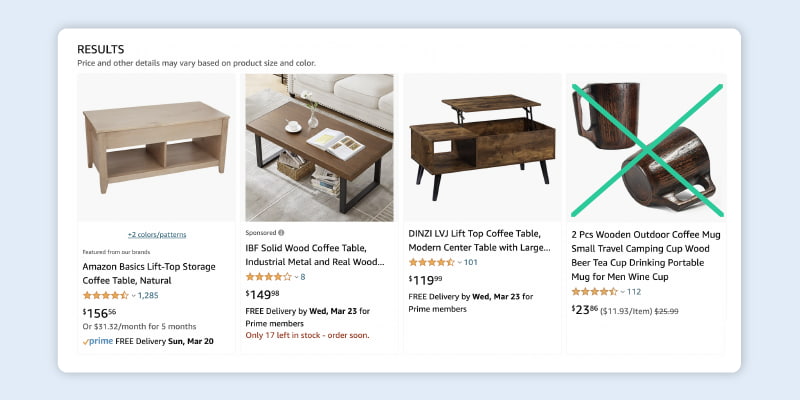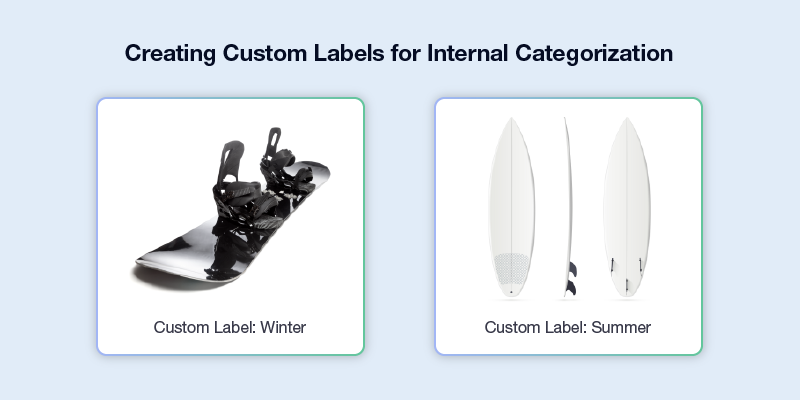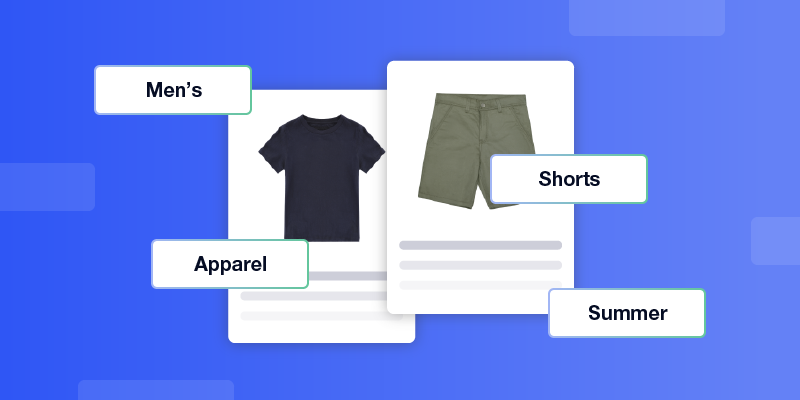When consumers need to purchase something, what is the first step they take? In a global survey, Google found that regardless of whether a consumer plans to buy in-store or online, 59% of shoppers hop on the search engine to research the item before making a purchase. But how can you help your product show up when a customer searches for it? In addition to updating your product title and preparing your product listing to meet all of the channel’s requirements, a merchant should also categorize their products correctly according to the channel’s requirements.
What is product categorization?
In a nutshell, product categorization is how a marketplace or ad platform groups your products into distinct, hierarchical categories. Similar to classification within the animal kingdom, channels have broad categories (or taxonomies) that branch into more and more specific groups.

Why is product categorization so important?
Proper categorization plays an important role in product discoverability, how your product listings are displayed, and even how sales tax is calculated. Advertising campaigns and operational procedures are also improved by accurate product categorization.
Accurate product categorization improves the customer experience
Accurate product categorization improves the customer experience and also helps merchants reach the right shoppers.
For example, if a customer searches for a wooden coffee table on Amazon, and your wooden coffee mug shows up in their search results because it’s miscategorized, you are not reaching the customers who want to buy your mug. If you are selling a wooden coffee table that is not correctly categorized with the other coffee tables, again, you’re missing the opportunity to reach somebody who is browsing through coffee tables.

Granular product categorization unlocks category-specific attributes
In addition to assisting with common search phrases, product categorization is also used on platforms to determine what product attributes to include in listings.
Referring back to the search for a “wooden coffee table,” many channels have determined that consumers like to compare dimensions while they shop for furniture. Within the channel’s listing structure, measurements for all furniture items are included next to the product thumbnail. However, if your wooden coffee table is not listed within the furniture category, you will not have a well-structured way to share the product’s dimensions in your listing.
The more specific your categorization is, the more opportunities you have for supplying detailed attributes in your listings. Inadvertently hiding these relevant attributes can cause potential customers to select a competitor’s product instead, simply because the listing includes more helpful product information.
Proper product categorization aids in advertising campaigns
Marketplaces and ad platforms also use product categorization to group products in ad campaigns and remarketing efforts. Amazon and Google promote products and provide recommendations to customers based on their activity, search history, and previous purchases. Accurate product categorization increases the likelihood of your product getting recommended to potential customers who have shown interest in a particular product category.
Let’s say that an Amazon customer has an affinity for purchasing wooden drinkware. Amazon uses this information to recommend or promote similar products within this particular category to the customer. If your listing for a “wooden coffee mug” is improperly categorized, Amazon has a difficult time connecting your product to this ideal customer.
How do you ensure accurate product categorization at scale? Learn how Feedonomics can help.
Good product categorization improves operational processes
Proper product categorization also benefits merchants on an operational level. Creating your own product groups can streamline inventory distribution across marketplaces and improve bid strategies on ad channels.
For instance, if your online shop sells equipment and apparel for various winter and summer sports, you can create broad categories internally based on the season. By doing so, you can organize your product ads to increase bidding on ad placement for snowboards during the months when more customers are actively searching for winter sports equipment.

Alternatively, if you find that snow apparel sells better on some marketplaces than others, creating a “Snow Apparel” category to reserve inventory for sale on those specific channels is also beneficial.
Getting started with product categorization
So, you’ve decided to improve your product categorization. Great! Now, where do you start?
It is best to begin by reviewing your current product data and then sorting it into logical groups based on your organization’s procedures and sales goals. From there, review your marketplace or ad platform’s best practices for categorization. Although it is not a universal requirement to categorize your products, it is highly recommended for optimal performance on most shopping destinations.
Below are a few of the most popular channels where merchants list their products.
Product categorization on Google
Google is one of the most popular search engines, reaching 90% of global internet users, so it is important to have your products categorized correctly on Google’s ad and shopping platforms. If you do not specify a category, Google automatically categorizes your products based on your product’s title, description, and other details. However, it is always best to provide this information with your product listings at the very start. Doing so ensures you do not spend time waiting for the algorithm to analyze your data and potentially miscategorize your products.
Google’s Product Category Taxonomy
Google Product Category Overview
Product categorization on Amazon
It goes without saying that Amazon is an ecommerce giant with extensive brand loyalty. Nearly 90% of online shoppers are more likely to purchase a product on Amazon than on other ecommerce websites. Amazon also automatically categorizes your products, but again, for better results, it is important to set these categories yourself. Your commission rates also depend on proper categorization; if you miscategorize your products, listings can get removed.
Amazon Overview of Product Categories
Product categorization on eBay
eBay was one of the first ecommerce websites and is still the second-most-visited US marketplace. eBay requires sellers to select an appropriate category for each product listing. If eBay determines that you have miscategorized your items, it automatically moves your listings to what it considers the more appropriate categories. The marketplace can remove your listings altogether if it believes you miscategorized them on purpose.
eBay Categories and Classification
Product categorization challenges
Again, each channel and marketplace’s system of product categorization is different. If you are selling a handful of products, it’s easier to keep up with platform changes and drill down to the very node to know where to list them. But what happens when you have dozens or even hundreds of different product types listed on several marketplaces or ad platforms? That’s the point where many merchants throw in the towel and settle for subpar listings and mediocre conversion numbers, thereby missing out on the opportunity to grow their business and reach more customers.
Achieving the perfect product categorization
Don’t be overwhelmed by mountains of product data; let the team at Feedonomics make it easy for you. Our FeedAi technology automatically categorizes your products with 96% accuracy and 17 times faster than manual categorization.
Learn how our full-service feed management solutions for advertising channels and marketplaces can help you achieve your ecommerce goals.

With its leading data feed management platform, Feedonomics helps brands, retailers, and agencies optimize and list products on hundreds of shopping destinations around the world. Learn more about our full-service solutions for advertising channels and marketplaces.




